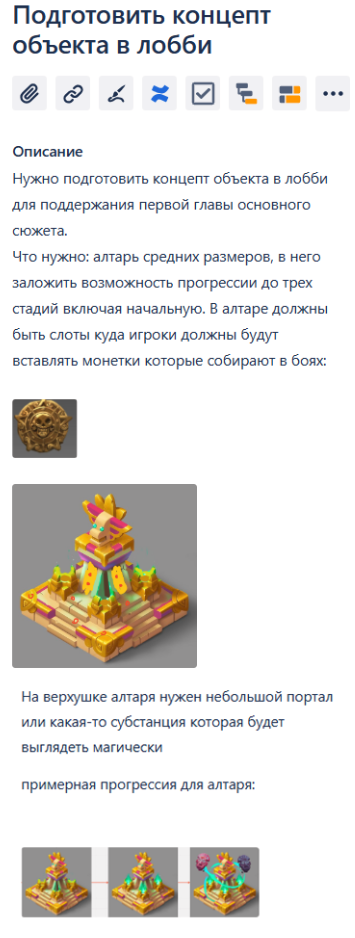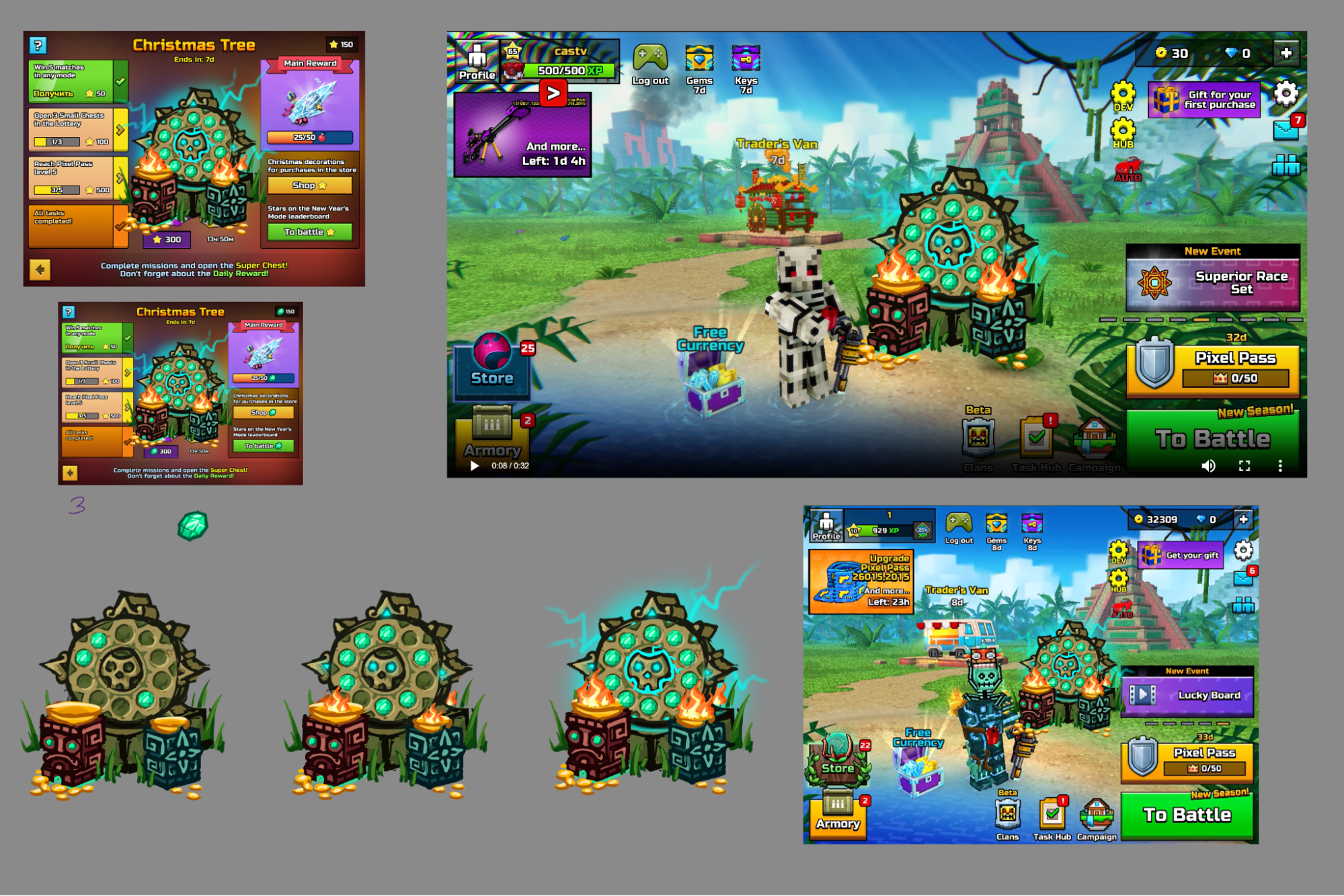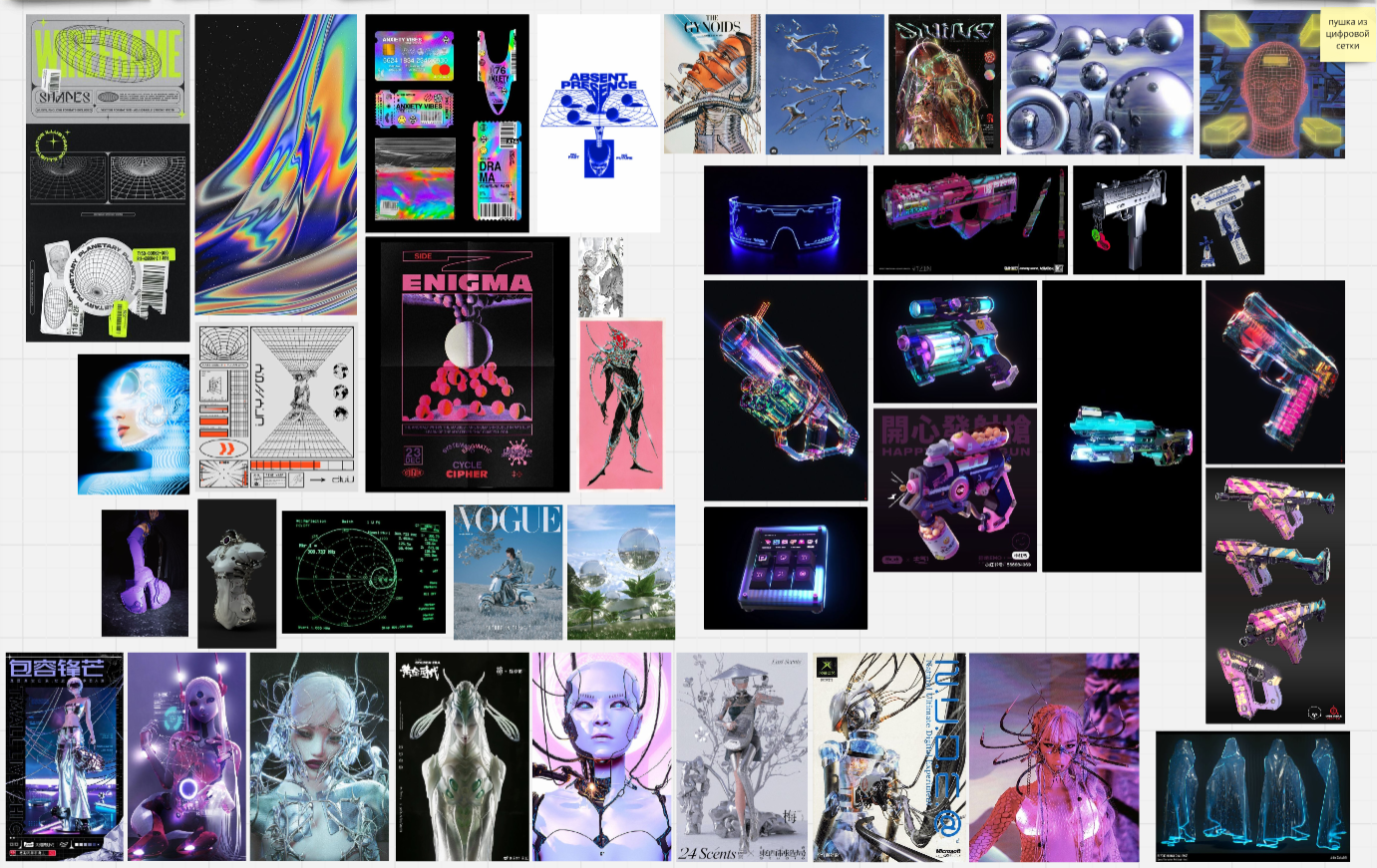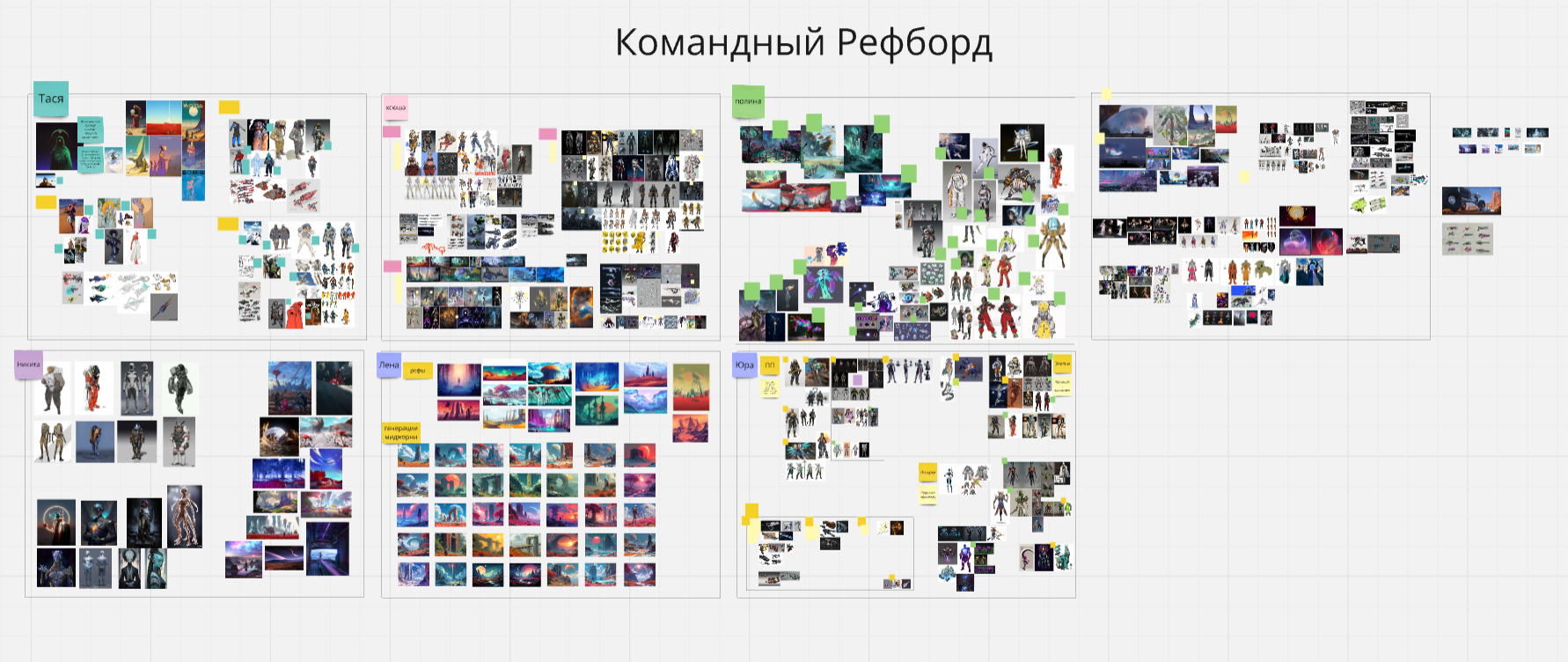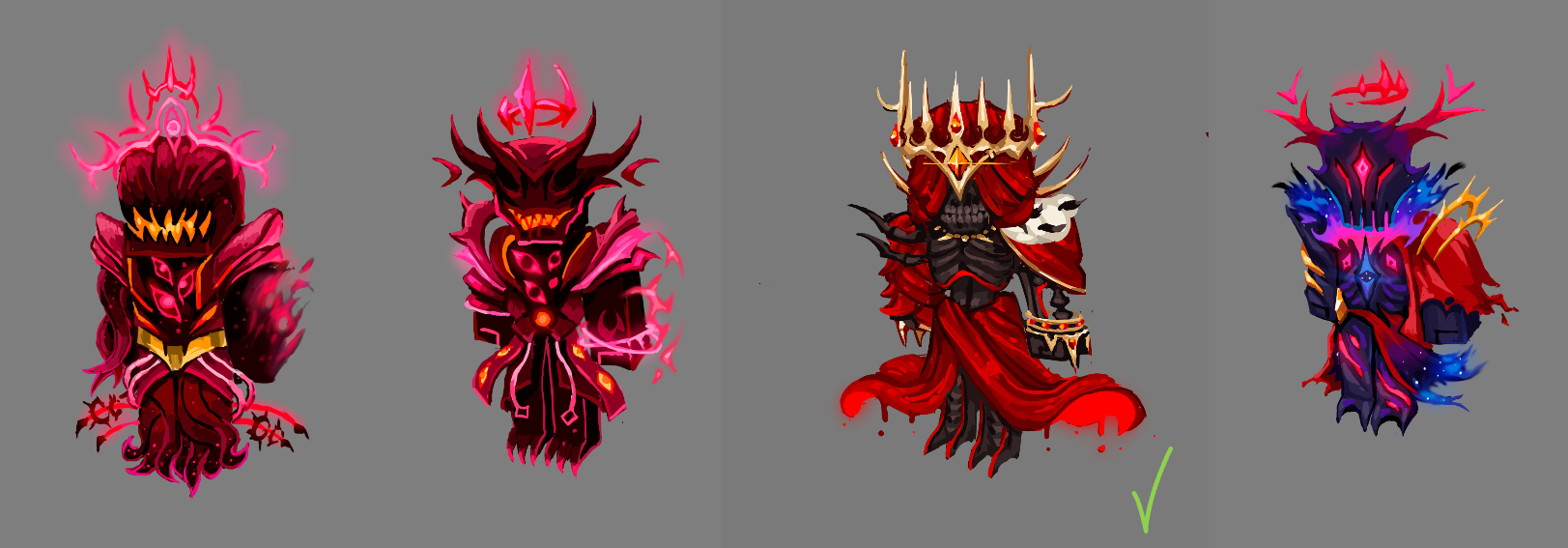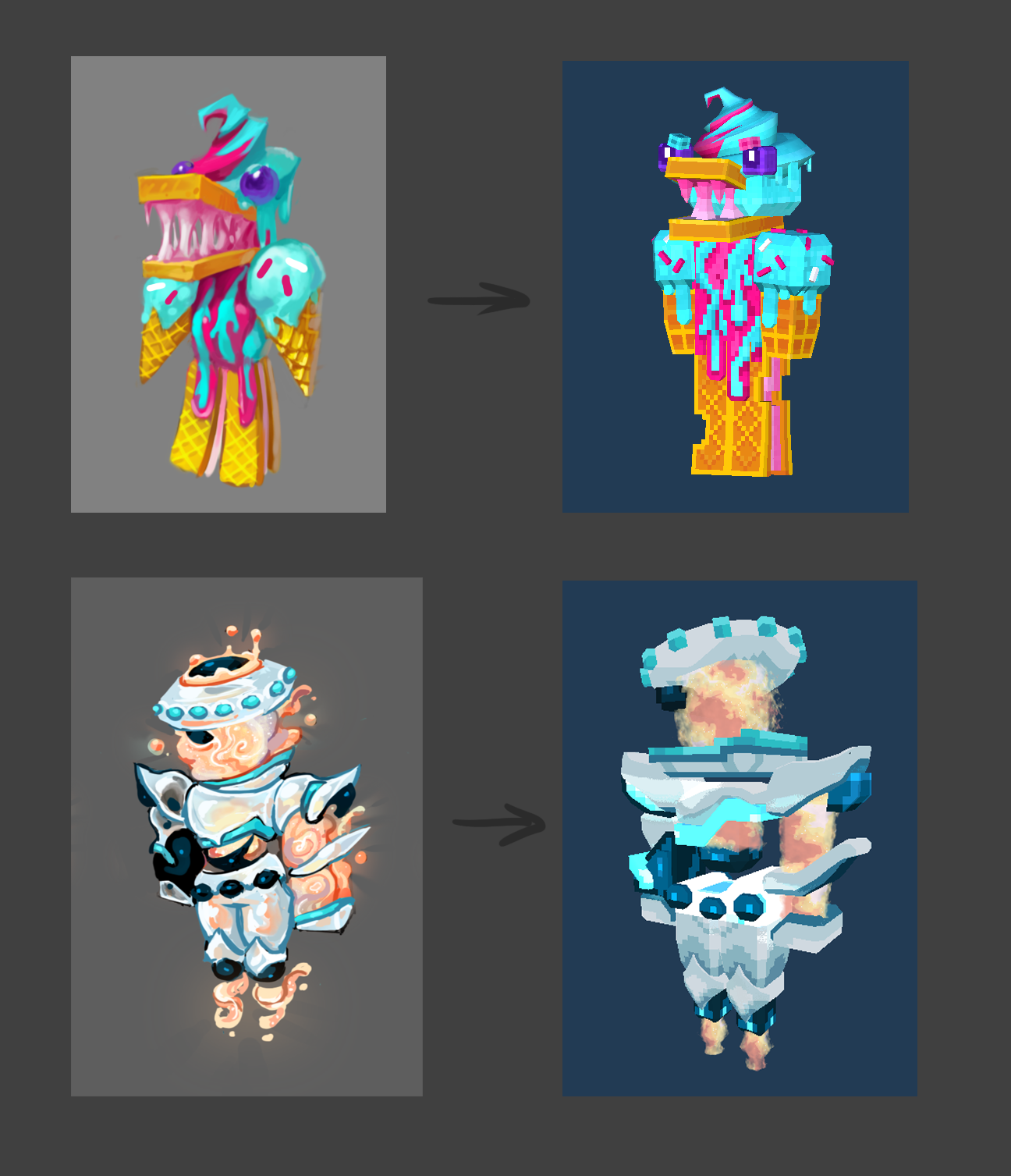Who is a concept artist? — A column by Cubic Games
Continuing our series of publications where game company specialists discuss professions, the newest article focuses on the work of a concept artist. Valeria Berlenko, a content producer at Cubic Games (part of the GDEV holding), provides insights into the nuances of this specialization.
Valeria Berlenko
Who is a Concept Artist?
A concept artist is a generator and visualizer of ideas.
The creation of a character in a movie, a location in a game, or a car in real life—all start with a concept.
It’s important to distinguish between concept art and illustration. The task of concept art is to come up with a design, how a particular entity will look and function. An illustration, however, tells a story or a plot.
Additionally, the tasks of a concept artist differ from those of a 2D or 3D artist. In a sense, a concept artist creates the "foundation" for the subsequent work of 2D and 3D artists.
A concept artist should have basic skills of a game designer to set the appropriate mood, understanding, and vision of a particular concept.
Essentially, concept artists "solve" the creative brief they receive from clients by searching for and turning text into art.
What are the Responsibilities of a Concept Artist?
Within game development, a concept artist is primarily a creator and inventor.
If you were to describe the job of a concept artist in one word, it would be—searching.
A concept artist is constantly seeking the most successful solution based on numerous factors: the vision of the producer, the requests and expectations of the target audience, the technical limitations of the project, aesthetic, moral-ethical, religious aspects... These and many other factors impact the development process and the final result.
Typically, concept artists are divided by specialization—some focus solely on characters, others on weapons, etc.
In our company, we have generalists—artists capable of designing characters, weapons, and environments.
The main responsibilities of a concept artist in our team include:
- Creating sketches and illustrations that visualize client ideas (usually from game designers);
- Developing team reference/mood boards;
- Creating 2D concepts for characters, weapons, vehicles, backgrounds, and other objects in the game;
- Preparing 3D concepts in the form of voxel models and 3D mock-ups;
- Visualizing and planning animations and effects for game objects;
- Texturing finished 3D models (developing and creating skins);
- Collaborating with the art director and other team members to ensure the visual style of the game is consistent;
- Participating in the creation of style guidelines and other documents describing the visual aspects of the game;
- Making changes and refinements to concepts based on feedback from the team and the client.
What Does a Concept Artist Need to Know to Perform Well?
While project requirements for concept artists can vary, generally, a concept artist should:
- Be creative and able to generate many ideas;
- Be comfortable working in uncertainty, with vague or no creative briefs (it's all about searching);
- Have a solid artistic foundation (understanding composition, working with form, color, light, perspective, and anatomy);
- Be skilled at working with references;
- Possess visual literacy and the ability to use it harmoniously in their work;
- Understand design basics and be able to plan how an object will function;
- Be proficient with graphic editors (such as Adobe Photoshop);
- Have a basic understanding of 3D modeling and texturing;
- Know how to work with feedback;
- Be stress-resistant.
Where Do Concept Artists Come From and Where Do They Go? How to Get into Concept Art?
In game development, concept artists usually come from 2D and 3D backgrounds. You could say it's a branch of an artist’s career path. They also generally move towards 2D, 3D, or into art direction/management.
In concept art, beauty and thoughtfulness are equally valued, so to become a concept artist, you need to love drawing extensively as much as you love thinking extensively.
For hiring, you need to understand the specific area you want to become a concept artist in. Maybe you enjoy drawing characters, environments, or weapons and machinery. Maybe you want to work in the game industry, or perhaps in films. Do you prefer realism or stylization, fantasy or sci-fi, and so on?
Once you've chosen your niche—study the market, find projects you'd like to develop concepts for. Check out works on ArtStation by other concept artists who draw for these projects. Draw as though you’re already working on that project. Ask for feedback from other skilled concept artists on your work, which is very beneficial. Make connections in the game industry—often, networking leads to job opportunities. Write to companies you want to work for; sometimes they hire talented artists even without an open vacancy, or they might contact you as soon as a need for a new employee arises.
What Is Needed for Growth in This Field?
The recipe for growth is simple:
5% theory + 85% practice + 10% quality feedback
Are There Red Flags in This Profession?
Creative burnout. A concept artist must constantly surprise and offer something new, fresh, unusual, interesting, and cool. This requires constantly finding new ways to solve the same tasks, trying new techniques and processes, stepping out of the comfort zone, brainstorming. All of this can lead to creative burnout. You need to continuously find ways to recharge and get inspired.
Lots of concepts get shelved. Understand that, for example, out of six options, one is chosen while the others are discarded, possibly never seen, and likely won't even make it into your portfolio.
Subjectivity. This aspect is always present in artistic fields, to varying degrees. It's beneficial when all participants in the process can defend their decisions with constructive arguments, but even then, subjectivity remains.
Concept ≠ Implementation. In general, this is a common case.
What to Read About This Specialty?
Visit ArtStation as often as possible.
I also recommend:
- “Tips and Tricks for Creating Concept Art in the Gaming Industry” by Paul Richards;
- "Framed Ink: Drawing and Composition for Visual Storytelling" by Marcos Mateu-Mestre;
- "Color and Light" and "Imaginative Realism: How to Paint What Doesn't Exist" by James Gurney.

